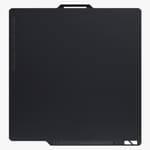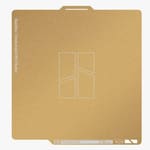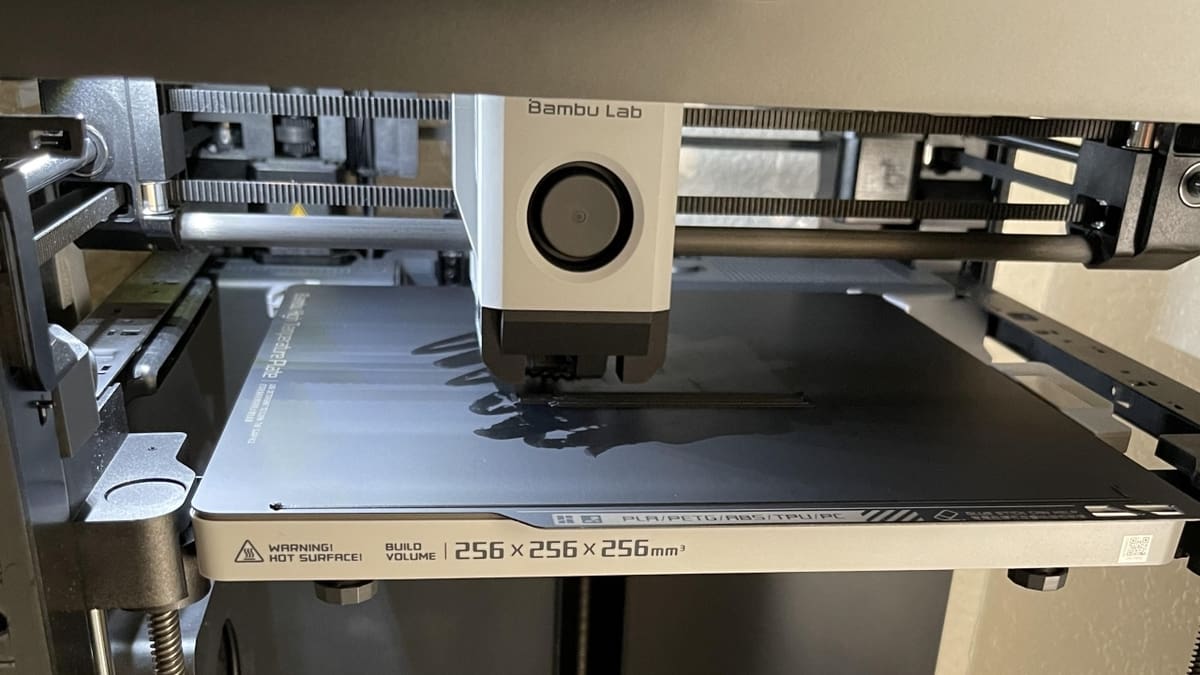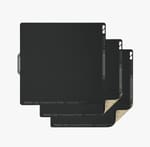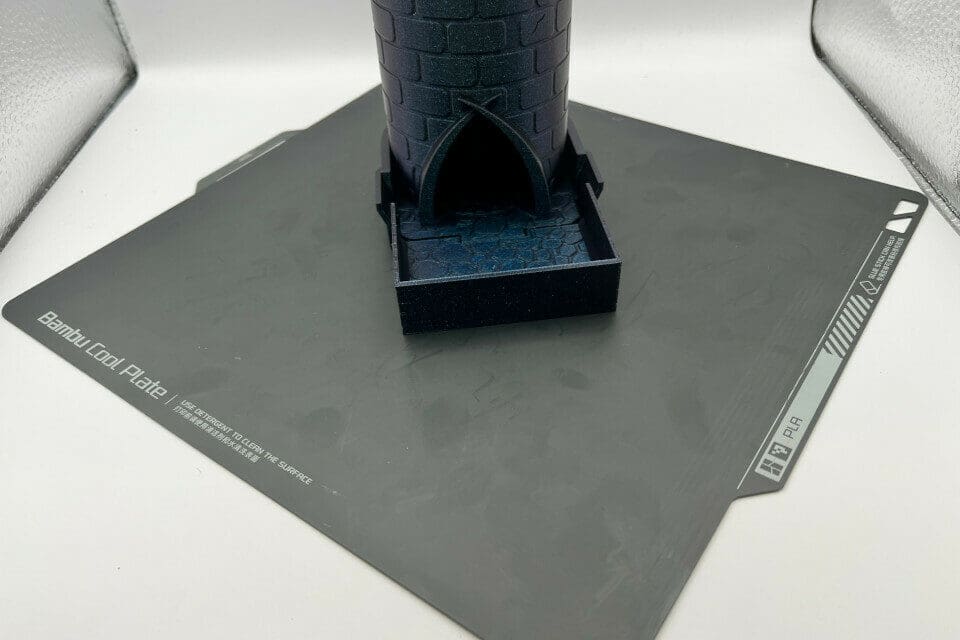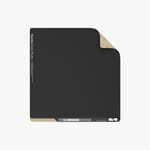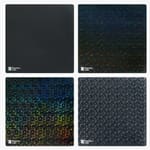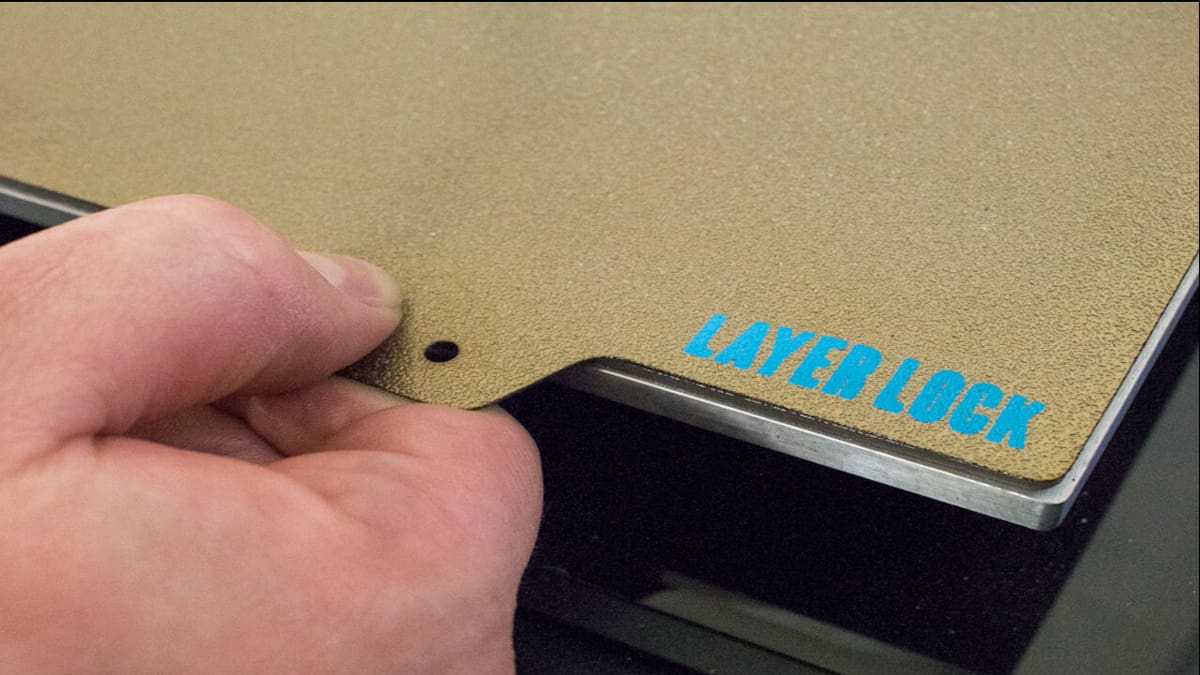Build plates are one of the critical components of a 3D printer. They provide a surface onto which model layers are printed. They’re also much discussed and highly debated among makers because there are many build plate options out there.
For their increasingly popular printer series, Bambu Lab offers a few build plate options that are in line with those produced by other manufacturers. There are three basic plates: Smooth PEI, Textured PEI, and Engineering. The latter is unique because it’s a dual-sided plate with one side being suitable for engineering-grade materials and the other coming with either a High Temperature or Cool plate sheet. In addition to the basic plates, Bambu Lab now sells novelty 3D effect sheets for makers looking for something extra.
As of writing, the plates are available in two sizes. One is compatible with the X1 series, the P1 Series, and the A1, while the other is specific to the A1 Mini. Unfortunately, not every plate is available for every printer.
Of course, all of these options are hotly debated by makers. So, in this article, we’ll give you the what’s what on Bambu Lab’s build plates as well as some third-party favorites among makers.
Smooth PEI Plate
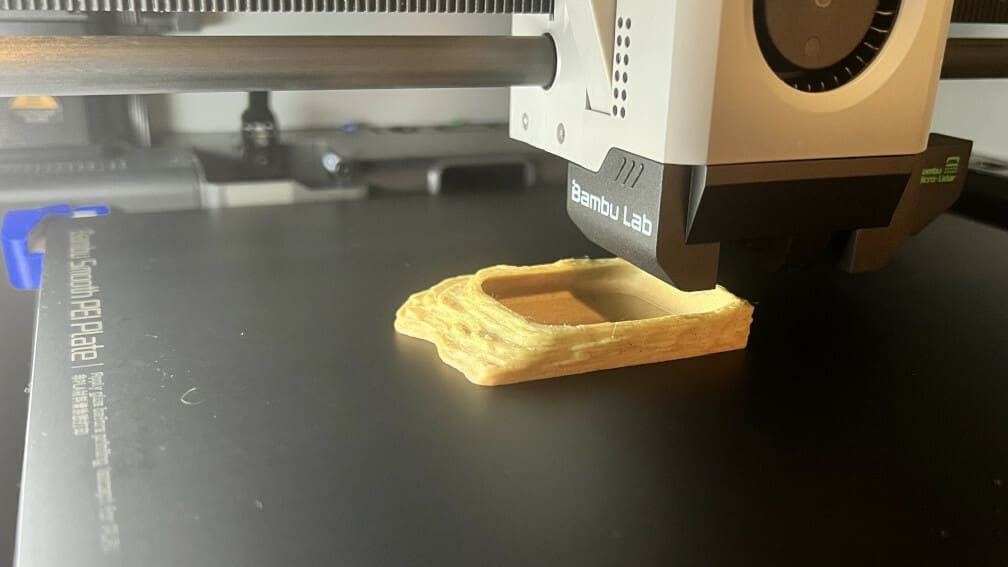
The Dual-Sided Smooth PEI plate is a 0.5-mm spring steel plate with PEI sheets permanently attached to both sides. Its smooth surface creates a matte finish on the bottom of your prints, which could be desirable depending on the use case.
This plate can be used with many types of filaments, but the manufacturer advises users to use a glue stick when printing with any material other than PLA. Please be advised that the sheets will wear down over time, and they’re not replaceable. So, this plate is considered a consumable part.
In terms of what the community is saying, some users find that the adhesion is just as good as, if not better than, the Textured PEI plate.
- Compatible printers: X1 series, P1 series, A1 Mini
- Compatible materials: ABS, ASA, PLA, PETG, TPU, PA, PC, and PVA as well as carbon and glass fiber reinforced composites
- Price: ~$25 (A1 Mini), ~$38
Textured PEI Plate
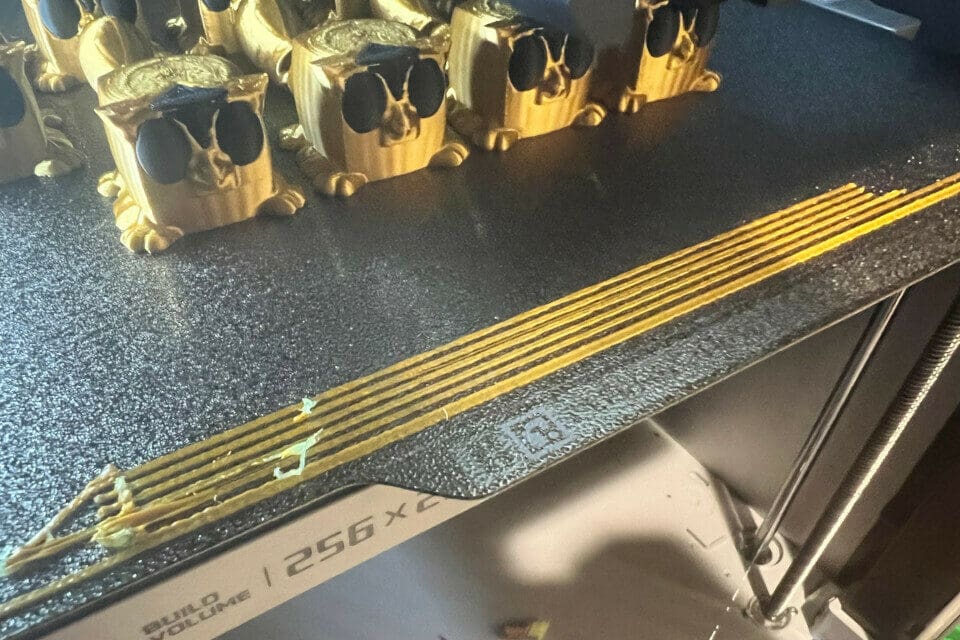
The Textured PEI plate is probably the most frequently used plate, and it’s well loved. It’s a 0.5-mm spring steel plate sprayed with a 0.075-mm thick PEI coating on each side. The textured surface transfers to your prints, giving them a unique look. Another great feature is that your prints release without much effort when the plate has cooled.
This plate is a great option for nearly all materials. Glue is only recommended when printing with TPU, PC, or PC-CF. Also, you’ll definitely want to ensure a clean surface for the plate to function at its best. Although generally true for all plates, this especially applies to the Textured PEI place given its surface. Contaminants such as oils and debris can cause adhesion issues. So, cleaning the plate with soap and water is the top recommendation.
If you want the best of both worlds, Bambu Lab also sells a build plate that is textured on one side and smooth on the other. So, you no longer need to decide between the two.
- Compatible printers: X1 series, P1 series, A1, A1 Mini
- Compatible materials: ABS, ASA, PLA, PETG, TPU, PA, PC, and PVA as well as carbon and glass fiber reinforced composites
- Price: ~$20 (A1 Mini), ~$38
Dual-Sided Engineering Plate
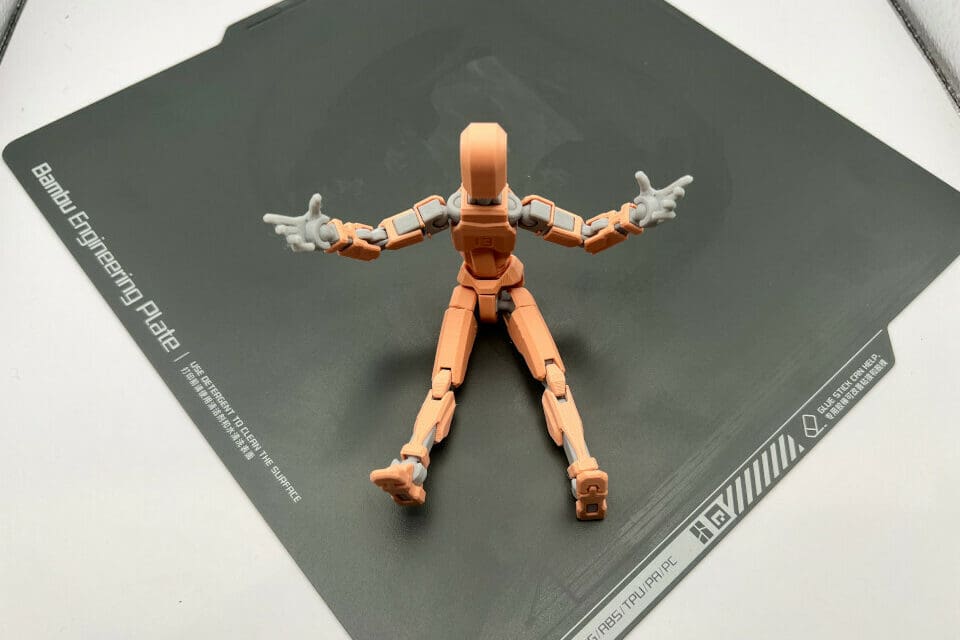
The Engineering plate is the base plate for both the High Temperature and Cool plates (we’ll discuss both of them below). The Engineering plate is the highest temperature plate available from Bambu Lab. According to their Wiki, it’s coated with a special thermosetting coating, which offers superior adhesion for materials that print with higher temperatures. Be aware, though, that you must use glue as a barrier and release agent for the materials.
There is, however, some controversy around this plate. Some users report bubbling and detachment on the High Temperature and Cool sheet sides of the plates. This can be from a number of things, including printing with too high temperature or poor installation, whether from the factory or the user. As with all products, proper usage will extend the life of wear products.
Additionally, some users experienced wear issues when using the Engineering plate with their Bambu Lab A1 printer. Some claim that an extra intermediary sheet might be required to prevent premature wear. If you have an A1, you should exercise caution and care when using this plate.
High Temperature Plate
The High Temperature plate is the Engineering plate with a PEI sheet attached to one side. This gives you the ability to print engineering-grade materials on one side and more common materials on the opposite side. The high-temperature side has a smooth surface finish. Best of all, if it becomes damaged or worn out, the sheet can be replaced.
While some users think the High Temperature plate works well, others are not as convinced. Proper usage, including both filament and temperature recommendations, may well be the difference between a good print and a failed print with this build plate.
- Compatible printers: X1 series, P1 series, A1
- Compatible materials: ABS, ASA, PLA, PETG, TPU, PA, PC, and PVA as well as carbon and glass fiber reinforced composites
- Price: ~$30
Cool Plate
The Cool plate is the Engineering plate with a polycarbonate sheet attached to one side. Bambu Lab primarily recommends PLA for the Cool plate side, but TPU and PVA are also possible to print with. Glue is recommended as a release agent, so you don’t damage the surface.
At time of writing, this plate is no longer for sale as a standalone, but you can still find Cool plate sheets on Bambu Lab’s international web shops.
- Compatible printers: X1 series, P1 series, A1
- Compatible materials: PLA and its carbon and glass fiber composites, TPU, PVA
- Price: ~$9 (spare sheet)
3D Effects Build Sheets
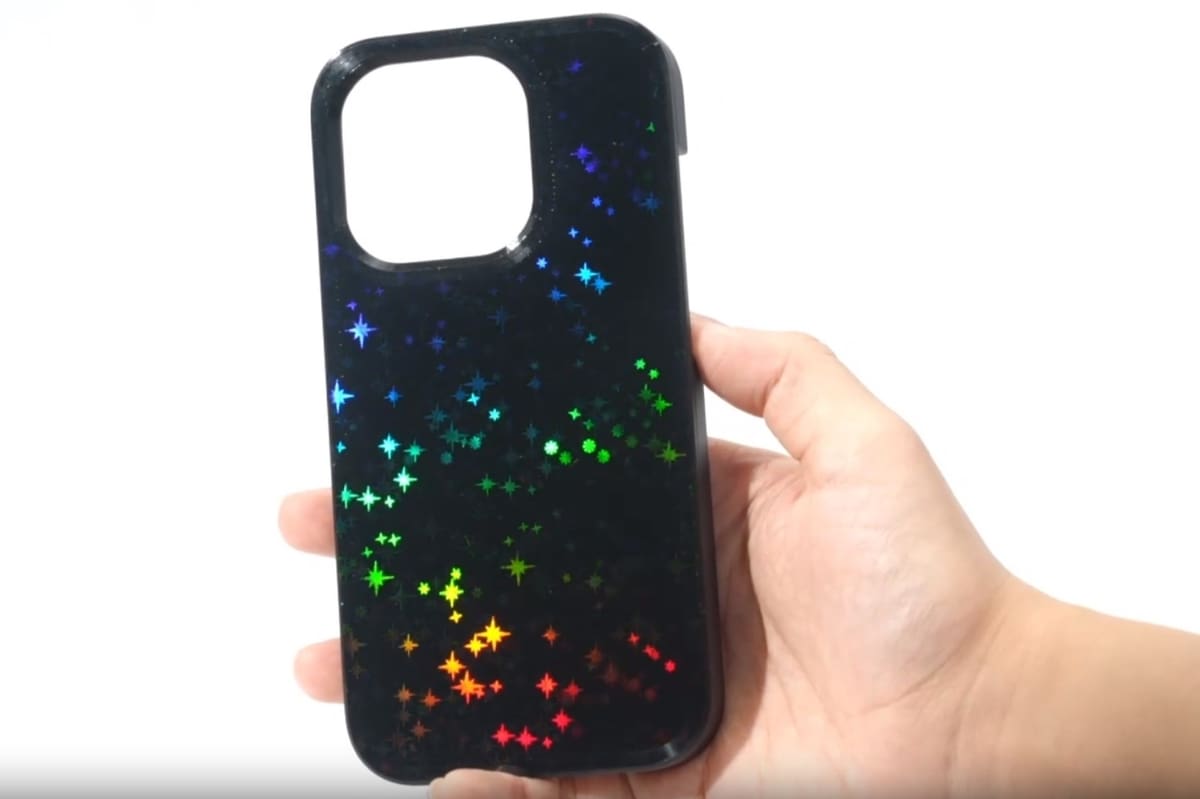
Build surfaces with novelty holograms and 3D effects have been on the market for a while, and now, Bambu Lab is jumping in on the action. They recently unveiled a combo pack with four different patterned sheets, two of which are sparkly and space themed.
Basically, you apply the 3D effect sheet to the build plate, then the 3D effect transfers to your part during printing. The effect only appears on the side of the print lying against the build surface. As you can imagine, this would work really well for designs with a large, flat surface area.
Bambu Lab advises against using glue sticks on the build surface. They also warn that lidar calibration might be disturbed by the sheets with reflective surfaces. The company offers a few more essential tips, so interested makers should definitely read the fine print.
Although a very fresh addition to their assortment, makers are already weighing in. Opinions are mixed, and there’s some very real hesitation with the sticker approach. If a sheet isn’t cleanly applied to the build plate, bubbles will form along the build surface and transfer to the print itself. Bambu Lab has, however, posted video guidance on how to properly apply the sheets.
As the sheets are so new, we haven’t had a chance to try them ourselves yet. If they’re anything like the sheets reviewed by YouTuber Uncle Jessy, you’ll want to make sure to let the build plate cools before removing your prints. He noted that the sheet material may lift off the plate if it’s still warm.
- Compatible printers: X1 series, P1 series, A1
- Compatible materials: PLA, TPU
- Price: ~$17 (A1 Mini), ~$25
Are Third-Party Plates Compatible?
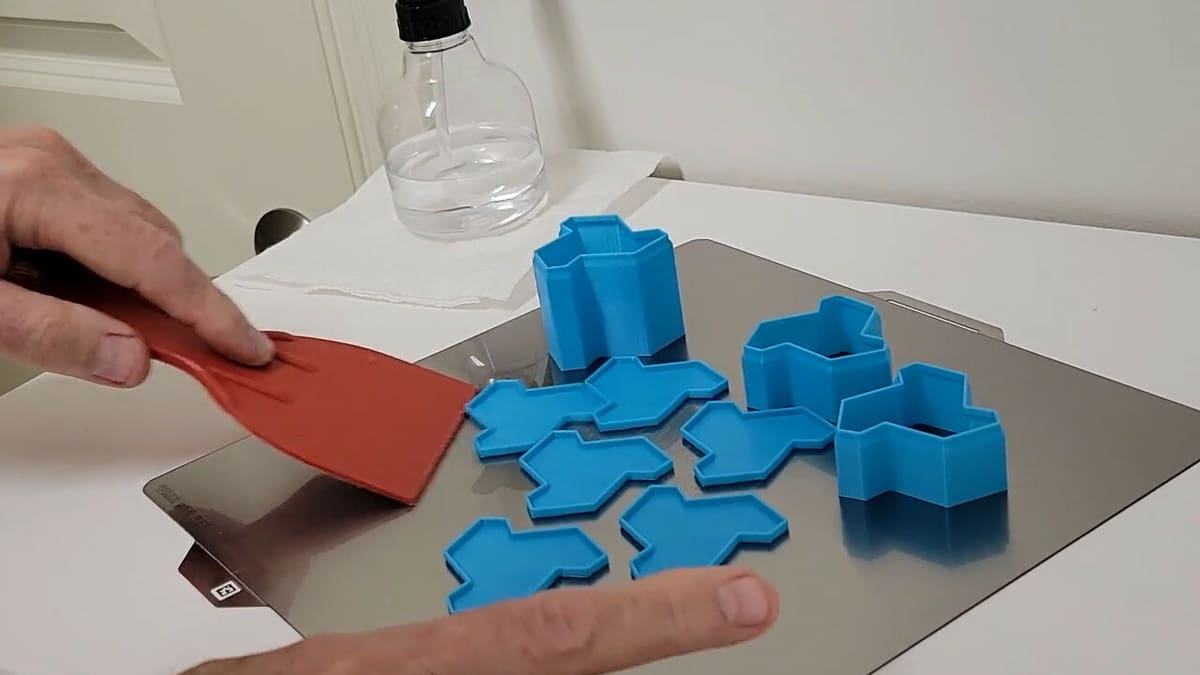
Many third-party plates work with Bambu Lab printers. There are a couple of things to keep in mind, though. First, each Bambu Lab plate has a QR code that the printer reads when initializing the print. You’ll need to make sure that an aftermarket plate has the proper QR coding so that the printer recognizes it.
Second, you’ll want to pay attention to the wipe zone at the edge of the plate. Bambu Lab printers use that space to do a final nozzle clean, so the plate needs to have that space. Some third-party plates may not have the correct wipe space configuration, which could lead to premature wear to the printer.
Third-party plates are frequently used in the community. Some especially well-liked brands include WhamBam, MatterHackers, and Lightyear.
WhamBam
WhamBam plates are a very popular option. You’ll often see them recommended in community forums. Along with PEI plates, they offer them in PEX – which, according to some manufacturers, has better adhesion and higher temperature resistance than PEI. Both, however, are compatible with a wide range of materials.
Makers can buy the Flexi Plate – a 0.4-mm flexible spring steel plate – all by itself or with build surfaces. The options for the latter include pre-installed PEX sheets and a powder-painted PEI coating. All of these options are available for the X1 and the P1 series printers, as well as the A1 Mini.
There’s also a thicker plate, the XTR, which comes with a powder-painted PEI coating and is compatible with the X1 and P1 series printers. It’s also worth noting that WhamBam sells sets of replacement QR code stickers.
The build place prices for the A1 Mini start at $23, while the prices for the other printers range from $37 to $62. Replacement PEX build surfaces cost $10 and $16, respectively.
MatterHackers
MatterHackers is a well-respected brand in the 3D printing community, and their line of LayerLock build plates pop up as recommendations now and then on community forums. Their options for Bambu Lab printers include powder-coated and smooth PEI, as well as a dual-sided build plate with both options. Prices start at $30. Based on the pictures, LayerLock plates have a different wipe area configuration than Bambu Lab’s build plates, so monitoring the plate while in use would be recommended.
Lightyear
Lightyear sells Bambu Lab-compatible build plates with a G10 coating. G10 is also known by the brand name “Garolite“, and the material is well regarded for its durability and excellent adhesion. The plate is compatible with a wide range of materials, but with a bed temperature limit of 120 °C, engineering-grade materials that require higher temperatures may be off limits.
Among makers, there are mixed views. Some love Lightyear plates, while others hate them. The plates cost about $45.
License: The text of "Bambu Lab Build Plate: What to Choose" by All3DP is licensed under a Creative Commons Attribution 4.0 International License.
CERTAIN CONTENT THAT APPEARS ON THIS SITE COMES FROM AMAZON. THIS CONTENT IS PROVIDED ‘AS IS’ AND IS SUBJECT TO CHANGE OR REMOVAL AT ANY TIME.

